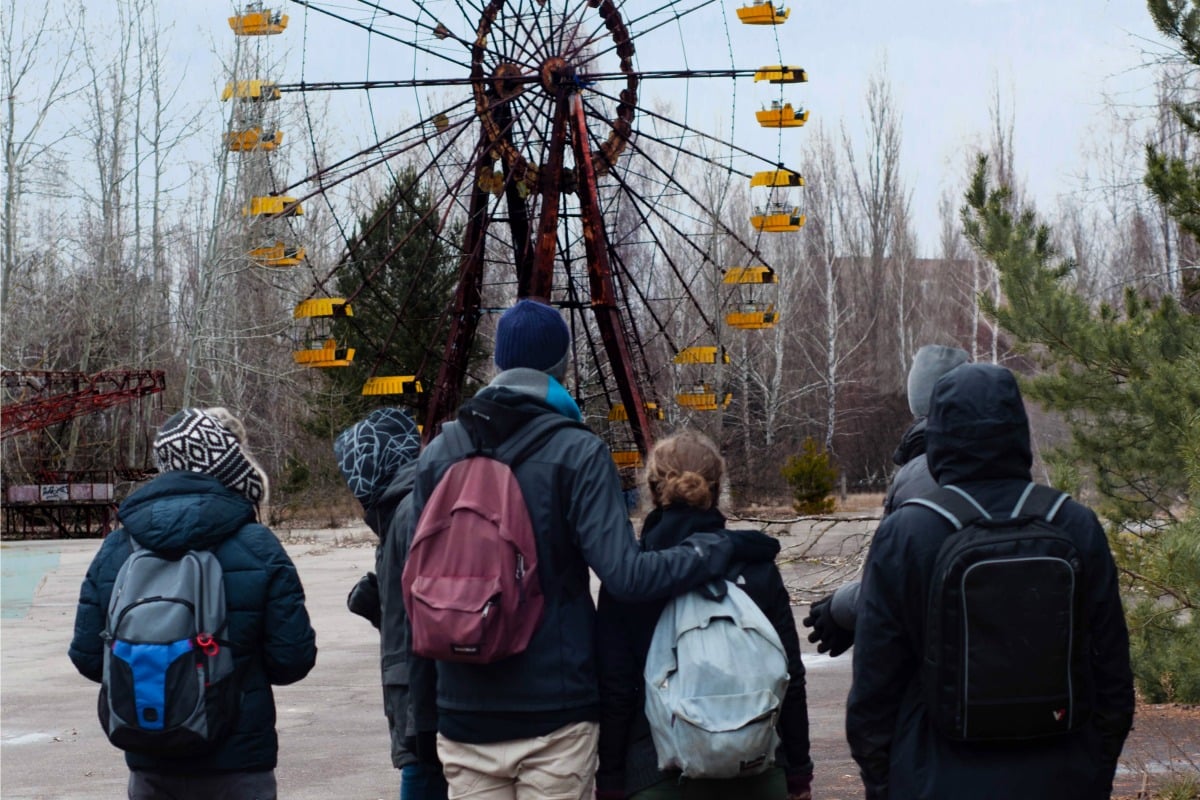
HBO’S hit miniseries, Chernobyl, which depicts the real-life events surrounding the 1986 catastrophic nuclear disaster in the Ukraine, has been become the highest-rated TV show ever on the International Movie Database (IMDB).
As well as scoring a 9.7 out of 10 average rating, and a perfect 10 for its final episode, the show also has a score of 95 per cent on Rotten Tomatoes.
The Dogs of Chernobyl – Abandoned In The Zone. Post continues after video.
But perhaps outside the world of the silver screen finds its most bizarre and intriguing success: Chernobyl site visits by morbidly fascinated tourists have risen by 50 per cent, according to Victor Korol, the head of SoloEast, a company that gives tours of the site, as reported by The New York Times.
Welcome to the world of dark tourism.
The concept of dark tourism was brought to notoriety by the Netflix series, The Dark Tourist in 2018. Host, David Farrier, travelled the world visiting sites historically linked to death and tragedy, including: Tomioka, a Japanese town evacuated during the Fukushima nuclear disaster, and Milwaukee, USA, for a walking tour of serial killer Jeffrey Dahmer’s murder locations.
